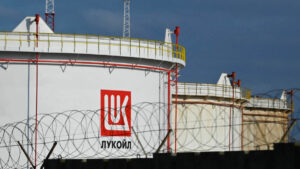A new kind of export: who managed to adapt

Ukraine, together with the countries of the Baltic and Black Sea regions, continues to develop transit “corridors”.
“Ukrainian cargoes should be moved with minimal checks and accelerated customs procedures, minimizing the existing infrastructure and bureaucratic obstacles on the routes as much as possible,” – experts of cargo analytical bureau Informall BG, based in Ukraine, believe.
USM reported that carriers are not allowed to release their containers to Ukraine, a country where a war takes place. Lines are afraid that their capacities simply will not return.
Previously, in order to pick up the goods, the importer had to disassemble the container, reload the contents onto land transport and only then import it to Ukraine. This is how delays in customs clearance occurred, and storage rates increased.
Such a procedure caused an additional loss of time and money. As of May, only a few shipping lines contributed to the accelerated movement of containers to/from Ukraine. Several lines have lifted restrictions on the import of container equipment to Ukraine. However, the lack of a container is still a problem in Ukraine.
Informall BG believes that the free movement of containers will speed up the delivery of essential goods and humanitarian aid to Ukraine from foreign seaports, as well as reduce the cost of freight. At the same time, more empty containers are needed to increase export capacity in Ukraine, which will support the country’s economy.
However, most shipping lines remain conservative and do not want to send containers to Ukraine. “The lines have passed the shock effect of the war in Ukraine, and some of them already offer import services to Ukraine through intermodal connections in some European hubs. I believe that over time, more and more carriers will offer intermodal services for Ukraine across the western border, primarily by rail,” says Vasyl Veselovsky, CEO of Informall BG.
Since February 24, Ukrainian exporters have been sending goods to international markets through container terminals in Poland (Gdynia and Gdańsk on the Baltic Sea), Lithuania (Klaipeda port on the Baltic Sea) and Bulgaria (Varna port on the Black Sea). They even involved Italy (the port of Trieste on the Adriatic Sea), as an alternative port in Constanta, Romania.
We note that Constanta remains the main container hub for Ukrainian shippers. However, there are serious delays and an increase in processing costs at the port, which is not suitable for all shippers.
In Ukraine, the “grain corridor” is gradually starting to work – on August 1, the first ship left the Odesa port, and in the near future they are also preparing to open the ports of Chernomorsk and Pivdennyi. Despite this, many Ukrainian seaports still remain blocked.
In addition to the sea, cargo delivery is carried out by railways and trucks. True, trucks are often delayed at border checkpoints due to numerous “bottlenecks” on the route.
“In June, the average waiting time at the southern border of Ukraine for an export truck was about 7-9 days. Trucks with imports could wait 4-5 days in a row,” said Informall BG project manager Oleksandr Khromov.
There are more checkpoints on Ukraine’s border with Poland. They provide higher throughput, which allows container cargo to be delivered to/from the ports of Gdynia and Gdańsk faster.
Danylo Melnychenko, data analyst of Informall BG, says: “Ukrainian shippers and regional transport companies needed about 3-4 weeks to adapt to the new reality of martial law. To start developing alternative routes for the delivery of container cargo to/from the country in the state of war. Obviously, such alternatives are much more expensive and less effective, but when someone intends to continue business during the war, he has no other choice but to take a risk and pay an increased price.”
The Government of Ukraine is also trying to cope with the problems of logistics during the war. The Cabinet of Ministers of Ukraine decided to allocate 250 million UAH (7.4 million US dollars) from the state budget to the Ministry of Infrastructure to ensure the safety of shipping in the water area of Ukrainian ports in the Danube region. And, in addition to the shipping industry, to ensure the safety of railway transport.
The funds will be kept at the Military University. From this account, the agency will compensate for losses caused by Russia’s aggression against Ukraine.





